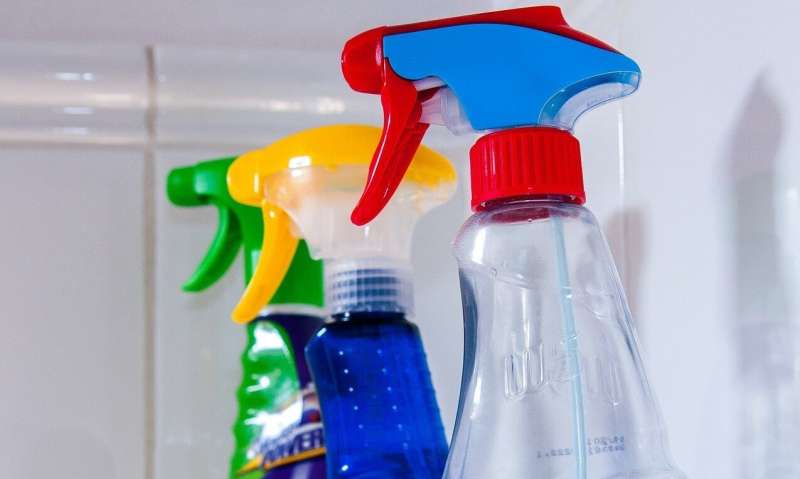Credit: CC0 Public Domain
Cleaning and disinfecting are paramount to preventing COVID-19 contamination from spreading into and throughout one's household. Texas A&M AgriLife Research—Institute for Infectious Animal Diseases, IIAD, experts offer guidelines for keeping safe.
This information was compiled by Sarah Caffey, program manager; Jessica Cargill, assistant director; Heather Simmons, DVM, associate director; and Melissa Berquist, Ph.D., director, all in College Station.
All the guidelines were gathered from the CDC Recommendations for Cleaning and Disinfection.
- General guidelines for cleaning and disinfection in household settings
- Cleaning: The process of removing dirt and germs from a surface or item.
- This process alone does not kill germs.
- Removing as many germs as possible lowers their risk of spreading.
- Disinfecting: The process of using chemicals to kill germs on surfaces.
- Does not necessarily clean dirty surfaces.
- Killing germs by disinfecting after cleaning lowers the risk of germs spreading.
For households without suspected or confirmed illness
Practice the following preventive actions:
- Clean the most frequently touched surfaces and objects in your household daily (e.g., mobile phones, tables, countertops, faucets, switches, doorknobs, etc.) using water and a regular household cleanser.
- Before applying a disinfectant, all dirty surfaces should first be cleaned using water and a regular household cleanser.
- Be sure to follow the manufacturer's instructions for all cleaning and disinfecting products.
Recommendations for cleaning and disinfecting households with residents in self-isolation, either suspected or confirmed to have COVID-19
General Guidelines:
- Clean and disinfect frequently touched surfaces and objects daily—especially those in common areas such as mobile phones, remotes, tables, chairs, doorknobs, switches, handles, desks, toilets and sinks.
- If possible, designate a dedicated bedroom and bathroom for the ill person and only clean and disinfect those areas as needed to minimize contact.
- Further minimize contact by providing a set of personal cleaning supplies including tissues, paper towels, cleaners and disinfectants for the ill person to use in their designated space, unless the ill person is a child unable to handle the supplies.
- If the ill person is sharing a bathroom with others in the household, that space should be cleaned and disinfected each time after an ill person uses it.
How to clean and disinfect:
Surfaces
- Wear disposable gloves.
- Discard gloves after each use.
- Clean hands immediately after removing gloves.
- Use a detergent or soap and water to clean prior to disinfection.
- For disinfection, diluted household bleach solutions, alcohol solutions with at least 70% alcohol, or most common EPA-registered household disinfectants should be effective.
- Two options for creating your own bleach solution: Mix 5 tablespoons or 1/3 cup of bleach per gallon of water; or mix 4 teaspoons of bleach per quart of water.
- For soft and porous surfaces such as carpet, drapes and rugs, first remove any visible dirt and then clean with products designated for use on these surfaces.
Laundry items
- Wear disposable gloves when handling dirty laundry from a sick person and discard the gloves after use.
- If you do not have gloves to use, wash your hands immediately after handling dirty laundry.
- Do not shake dirty laundry—this could spread virus particles through the air.
- Wash items using the warmest appropriate water setting and dry them completely.
- It is okay to wash dirty laundry from a sick person with items from other people.
- Clean and disinfect hampers according to guidance for surfaces or place a liner in the hamper that can either be laundered or thrown out after each use.
Provided by Texas A&M University
























